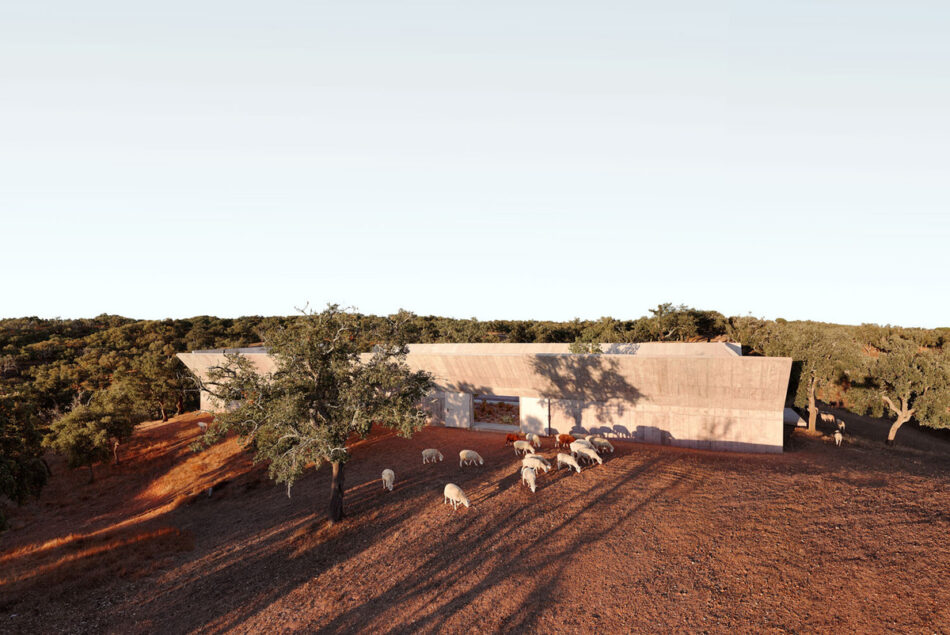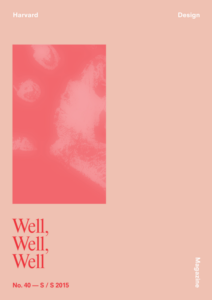Valerio’s Ark
Valerio Olgiati insists on the irreducibility of his buildings: “I am aiming for an architecture that has no origins and thus is non-referential.” In a quest for invention, the Swiss architect rejects abstraction as a representational strategy. Yet the sense of newness, of the never-before-seen, is often overwhelmed by the primeval dimensions of his work, as exemplified by the recently completed Villa Além in Alentejo, Portugal.
Situated in a dense cork forest six miles inland from the Atlantic Ocean, Olgiati built Villa Além as a personal retreat. Constructed from reddish-tinged in-situ concrete, Villa Além is more than a dwelling; it is an act of enclosure that creates a large courtyard within the forest. The enclosure of a private world is a common trope, and the courtyard appears frequently in southern European architecture. A means of spatial negotiation between the public and private functions of a dwelling, courtyards have appeared in many Olgiati designs—the unbuilt House in Sari d’Orcino (1999) in Corsica and Atelier Bardill (2007), for example. But Villa Além is not a development in the his- tory of a type, nor is it a direct emanation from Olgiati’s earlier buildings. It is instead an arche- type folded upon itself, the formal development of a single idea dialectically oscillating between naked openness and protective enclosure.

Olgiati has compared Villa Além to an ark; architecture critic Ellis Woodman calls it “the home for the last people on earth.” With its exterior openings closed, the courtyard fulfills this role, its dry and sunny garden an earthly paradise filled with plants from around the world. Further layered in seclusion, the interior spaces offer a contemplative retreat from the world through distinct—and often contradictory sensory experiences. While the large living room opens onto the courtyard, the study, with its obtuse pitched roof, seems to project itself into the surrounding landscape. The private mystery of the interior spaces reaches its apogee in the three bedrooms, each facing a private courtyard, and with an oval-shaped opening to the sky above.
We can also imagine Villa Além as a menhir, a mysterious remnant in a future when humans no longer inhabit the earth. Shorn of its furnishings, its doors and windows eroded, Villa Além’s concrete hulk will remain, its high walls sloping upward toward the eternal sun and sky. Olgiati’s design allows for this scenario to be tested: when the courtyard’s doors are thrown open, Villa Além’s monolithic status as a threshold between inner and outer worlds evaporates. The rural landscape spills into the courtyard in the form of wind, dust, and then pigs and sheep—the animals boarding their ark. We are left with the uncanny but uplifting feeling that architecture (especially Valerio Olgiati’s) must mediate our search for permanence in a world where none is possible.
Peter Sealy is a PhD candidate at the Harvard University Graduate School of Design, where he is a Frank Knox Fellow. His research explores the capacity of photographic objectivity to support subjective explorations in late 19th-century architecture.
